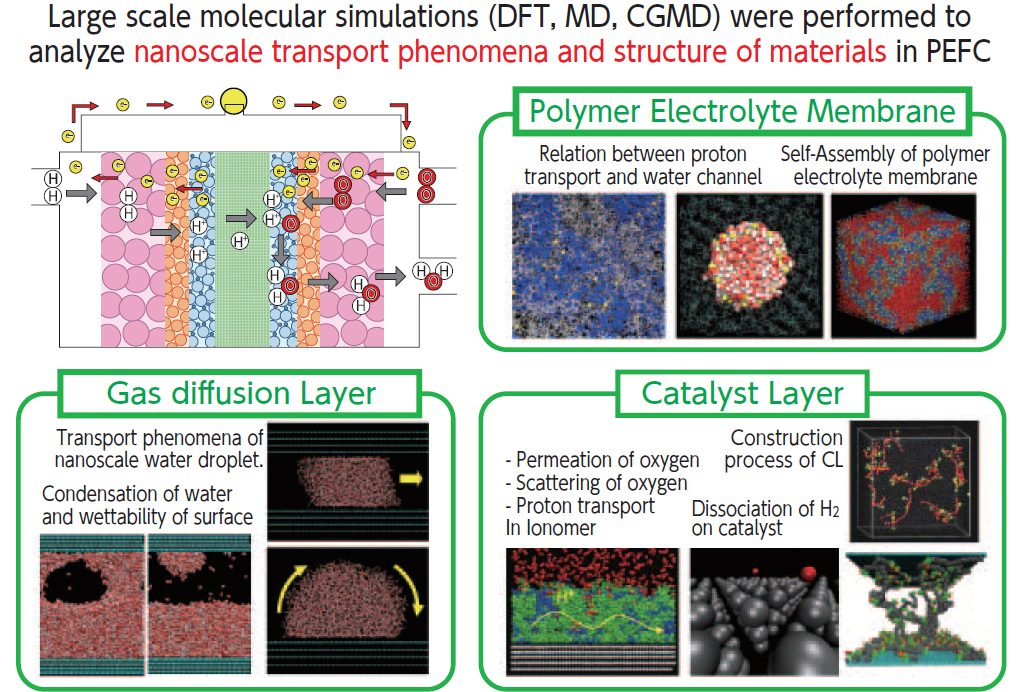Research
Goal
Based on SDGs, realization of minimum energy loss when using conventional types of energy and of super-high efficiency of next generation renewable energy will enable suppression of the use of fossil fuels to the extreme or will usher in a highly efficient, environmentally compatible type of energy supply system. Furthermore, smart energy supply systems that incorporate these created energies harmonically can be established to realize a sustainable energy social infrastructure.
Research vectors
Benefits of the Innovative Energy Research Center
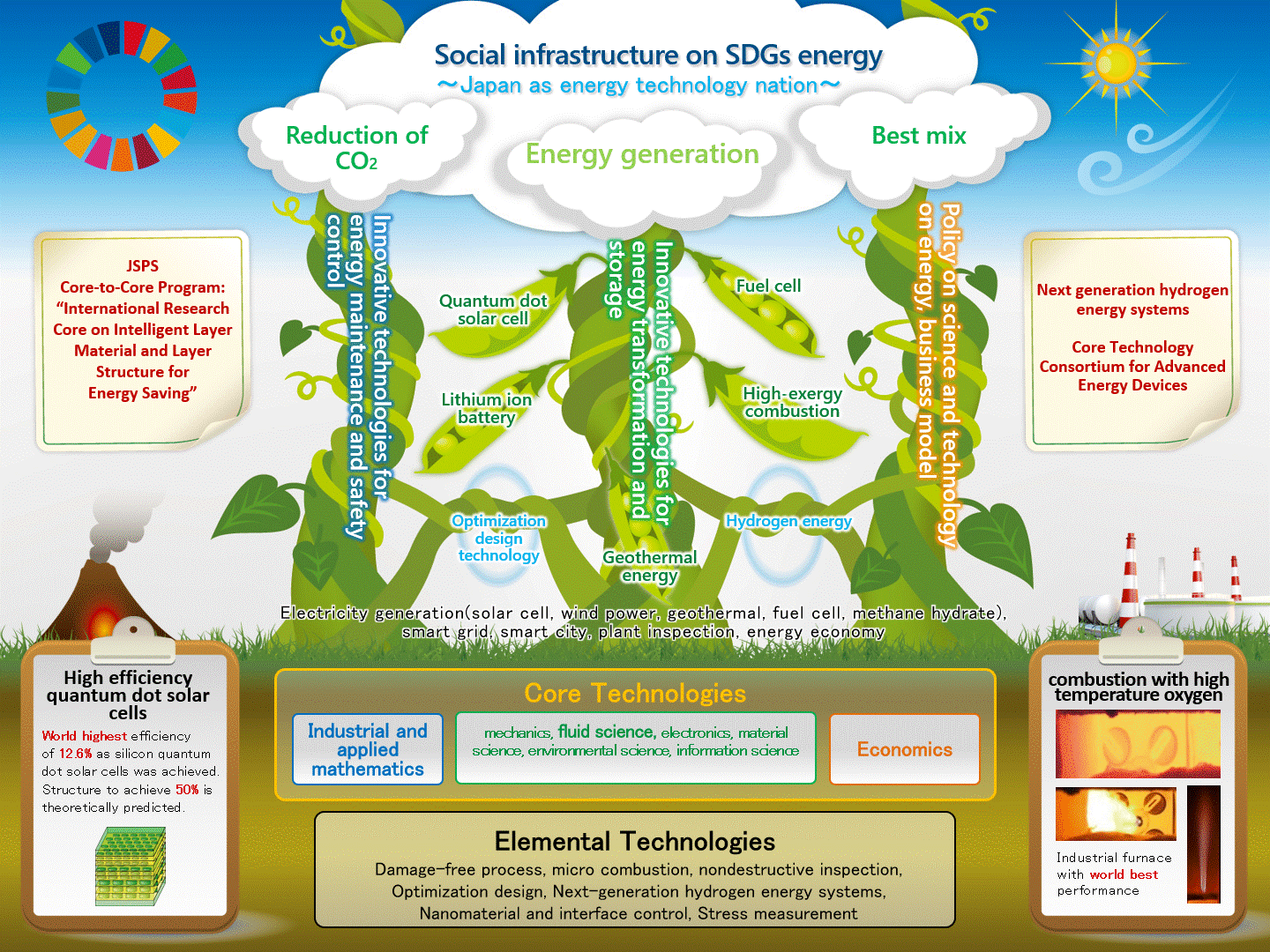
Research content
Green Nanotechnology Laboratory
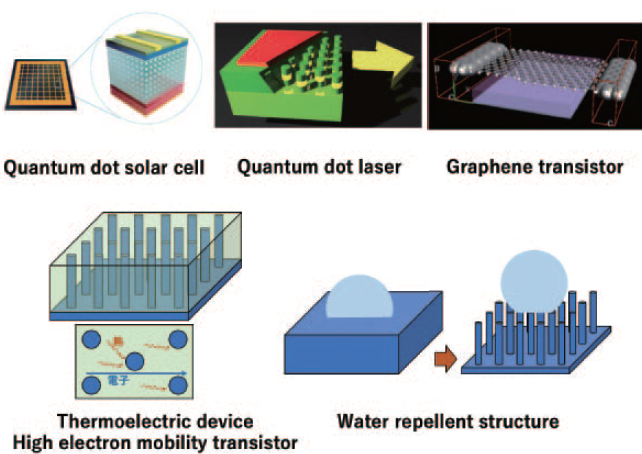
Energy Resources Geomechanics Laboratory
Development of Zero Emission Energy & Technology by ”Geomechanics = Geo(地球) + Mechanics(力学)”
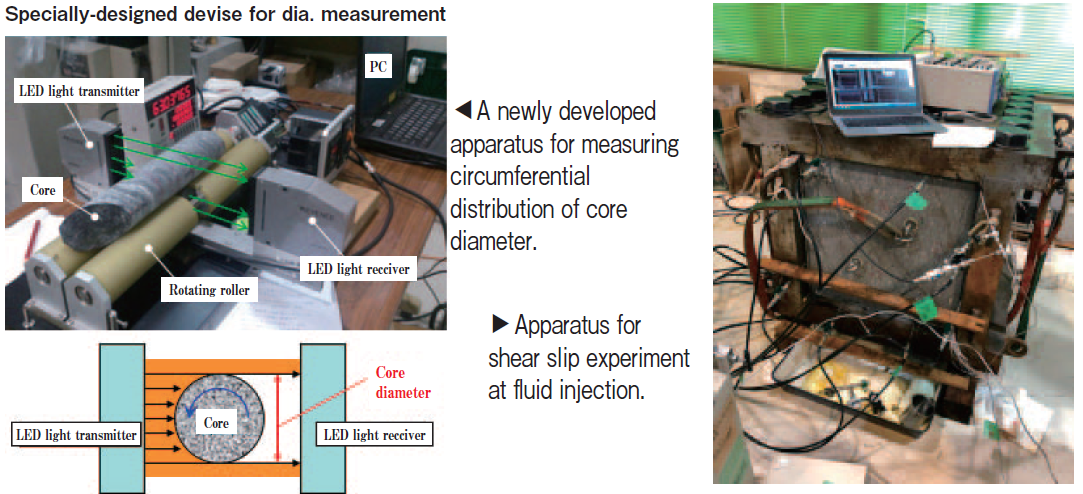 With the recent growth of the development for unconventional resources, we have realized that the knowledge of the geomechanics is quite crucial for the understanding of failure phenomena in subsurface and resource development. In our lab., we have been conducting the researches based on geomechanics for various applications such as CO2 geological storage, methane hydrate from deep seafloor, unconventional resources (shale gas & oil), easy and reliable in-situ stress measurement, and supercritical geothermal resource development. We develop the technology to highly utilize the subsurface environment (temperature, stress, closedness) to solve many challenges related to energy and to realize a sustainable society.
With the recent growth of the development for unconventional resources, we have realized that the knowledge of the geomechanics is quite crucial for the understanding of failure phenomena in subsurface and resource development. In our lab., we have been conducting the researches based on geomechanics for various applications such as CO2 geological storage, methane hydrate from deep seafloor, unconventional resources (shale gas & oil), easy and reliable in-situ stress measurement, and supercritical geothermal resource development. We develop the technology to highly utilize the subsurface environment (temperature, stress, closedness) to solve many challenges related to energy and to realize a sustainable society.
Measurement of in-situ rock stress is a critical parameter for the effective production of geothermal or unconventional hydrocarbon resources. We propose a new method of diametrical core deformation analysis (DCDA) for evaluating the in-situ stress of rocks from an elliptical deformation of boring cores. DCDA is game-changing method since we can directly estimate the magnitude of in-situ stress from simple core diameter measurement. At the various subsurface development associated with fluid injection, we experienced some felt size earthquake which possibly caused structural damage. To mitigate this seismic hazard risk of those anthropological earthquakes, we investigate the mechanism of those earthquakes and its causality to human activity.

Measurement of in-situ rock stress is a critical parameter for the effective production of geothermal or unconventional hydrocarbon resources. We propose a new method of diametrical core deformation analysis (DCDA) for evaluating the in-situ stress of rocks from an elliptical deformation of boring cores. DCDA is game-changing method since we can directly estimate the magnitude of in-situ stress from simple core diameter measurement. At the various subsurface development associated with fluid injection, we experienced some felt size earthquake which possibly caused structural damage. To mitigate this seismic hazard risk of those anthropological earthquakes, we investigate the mechanism of those earthquakes and its causality to human activity.
Energy Dynamics Laboratory
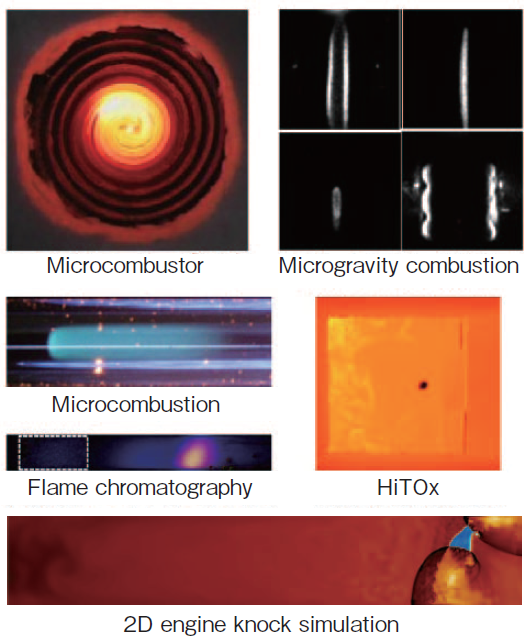
●Micro-, Mild and Microgravity combustions
●Multi-stage oxidation by micro flow reactor with prescribed temperature profile
●Combustion with surrogate fuels, biomass, and synthetic fuels
●High-temperature oxygen combustion
●Large-scale combustion simulations and development of numerical methods
System Energy Maintenance Laboratory
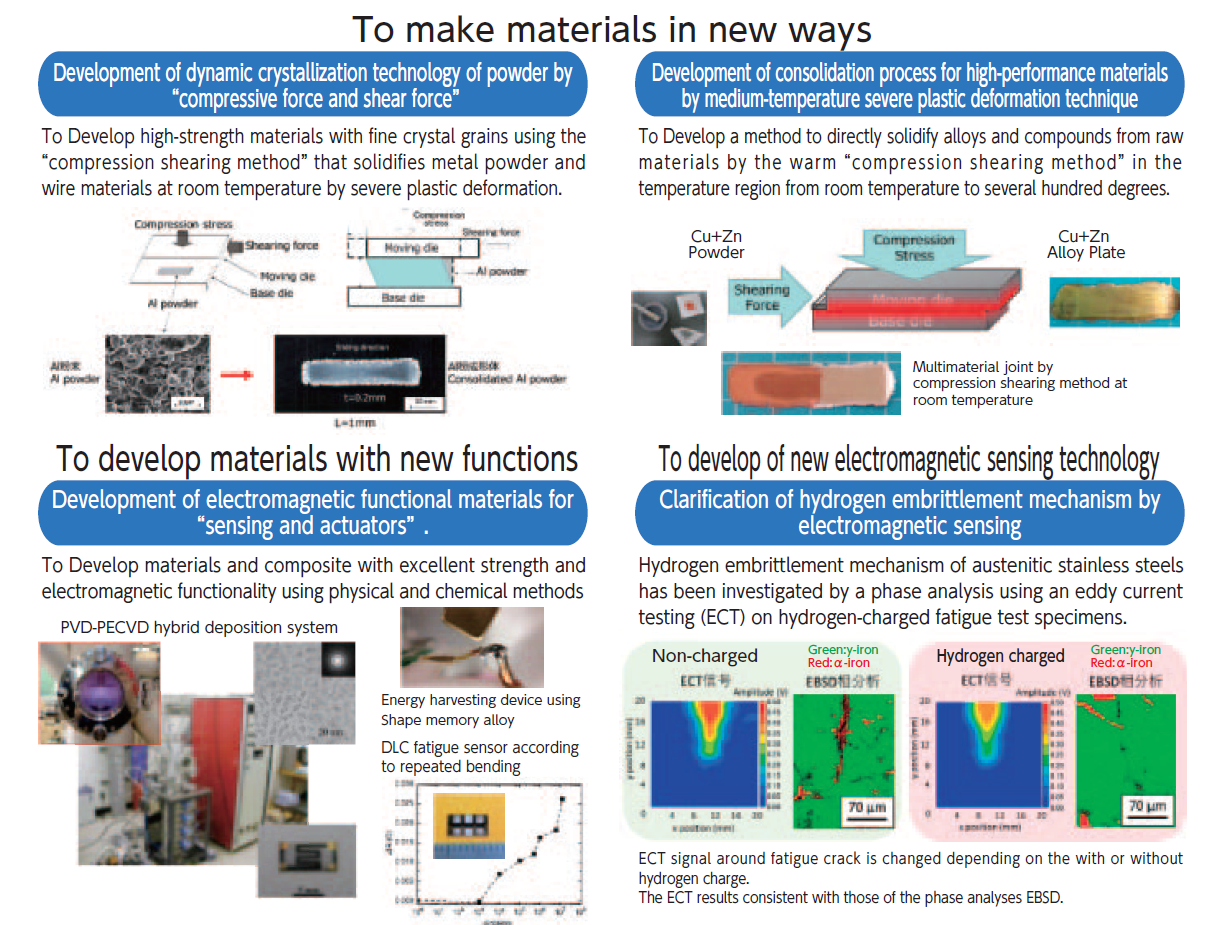
① Development of dynamic crystallization process of powder metal by “compressive force and shear force”,
② Development of consolidation process for high-performance materials by medium-temperature severe plastic deformation technique,
③ Development of electromagnetic functional materials for “sensing and actuators”,
④ Clarification of hydrogen embrittlement mechanism by electromagnetic sensing.
Multiphase Flow Energy Laboratory
Development of Integrated Multiscale Multiphase Flow Energy System
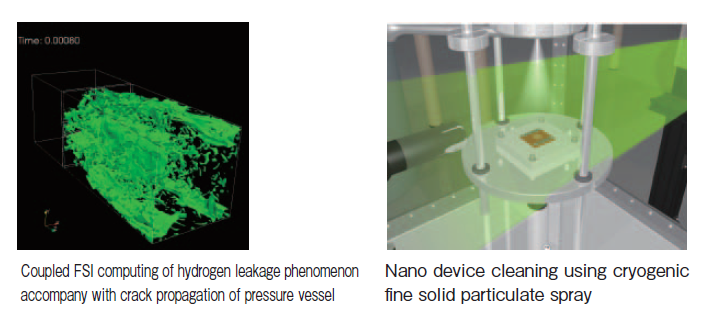 Our laboratory is focusing in the development of innovative multiphase fluid dynamic methods based on the multiscale integration of massively parallel supercomputing and advanced measurements, and research related to creation of environmentally conscious energy systems. Furthermore, we promote basic research for the creation of risk management science and associated new multiphase flow system directly linked to sustainable energy represented by a high-density hydrogen storage technology. Particularly, we are focusing in different field integration research and development such as creation of environmentally conscious type nano-cleaning technology using reactive multiphase fluid that is a thoroughly chemical-free, pure water free, dry type semiconductor wafer cleaning system using cryogenic micro-nano-solid high-speed spray flow, and also focusing on removal-reusing technology for solar cells and ITO membranes for conducting organic polymer (including indium oxide tin). We also performed computational study of multiple bubbles behavior in megasonic fleld to clarify the mechanism of particle removal by megasonic cleaning. Furthermore, aiming to contribute disaster risk science field, fundamental mitigation effect of mega-floating structures on the water level and hydrodynamic force caused by the offshore tsunami has been computationally investigated using SPH method taking into account the fluid-structure interaction (FSI).
Our laboratory is focusing in the development of innovative multiphase fluid dynamic methods based on the multiscale integration of massively parallel supercomputing and advanced measurements, and research related to creation of environmentally conscious energy systems. Furthermore, we promote basic research for the creation of risk management science and associated new multiphase flow system directly linked to sustainable energy represented by a high-density hydrogen storage technology. Particularly, we are focusing in different field integration research and development such as creation of environmentally conscious type nano-cleaning technology using reactive multiphase fluid that is a thoroughly chemical-free, pure water free, dry type semiconductor wafer cleaning system using cryogenic micro-nano-solid high-speed spray flow, and also focusing on removal-reusing technology for solar cells and ITO membranes for conducting organic polymer (including indium oxide tin). We also performed computational study of multiple bubbles behavior in megasonic fleld to clarify the mechanism of particle removal by megasonic cleaning. Furthermore, aiming to contribute disaster risk science field, fundamental mitigation effect of mega-floating structures on the water level and hydrodynamic force caused by the offshore tsunami has been computationally investigated using SPH method taking into account the fluid-structure interaction (FSI).

Novel Battery Nanoscale Flow Concurrent Laboratory
